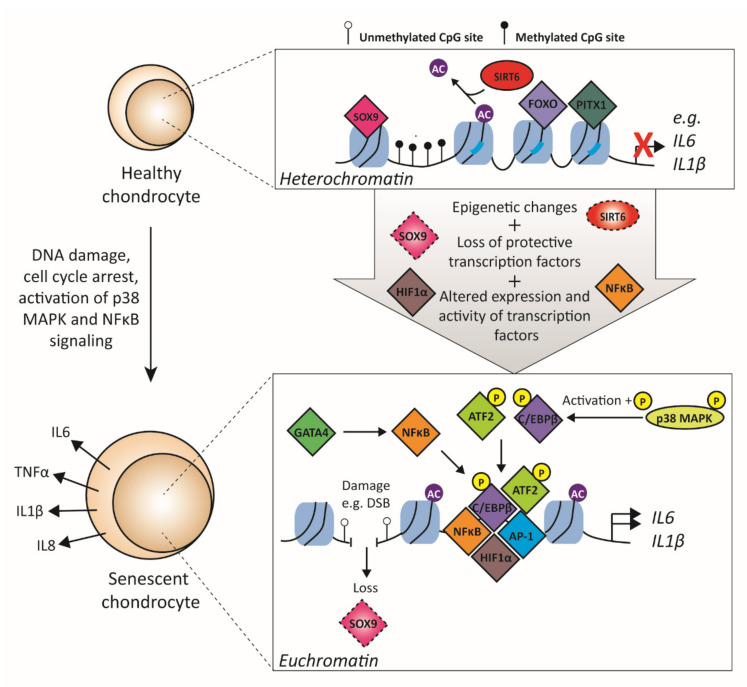Figure 4.
Transcription factors involved in senescence-associated secretory phenotype (SASP). In a healthy chondrocyte, senescence-related genes are silenced due to the compact composition of the nucleosomes and transcription factors that repress senescence, such as SOX9, FOXO, and PITX1. In OA development, multiple events occur, such as DNA damage, resulting in disrupted transcription factor binding. Furthermore, cells undergo cell cycle arrest, and different signaling pathways are activated. Together, this results in epigenetic changes by, e.g., loss of chromatin remodelers and loss of protective transcription factors. After the opening of chromatin, transcription factors can bind to promoter regions of SASP genes, and this results in increased transcription of these genes. In addition, the expression of these transcription factors is enhanced in OA cartilage, and their function can be enhanced by, e.g., post-translation modification by p38 MAPK. SOX9 = SRY-BOX transcription factor 9; FOXO = forkhead box transcription factor class O; PITX1 = paired-like homeodomain 1; SIRT6 = sirtuin 6; DBS = double-strand break; MAPK = mitogen-activated protein kinase; HIF1α = hypoxia-inducible factor 1-alpha; NFκB = nuclear factor kappa B; AP-1 = activator protein 1; c/EBPβ = CCAAT-enhancer-binding protein beta; ATF2 = activating transcription factor 2; IL6 = interleukin 6; IL8 = interleukin 8; IL1β = interleukin 1 beta; TNFα = tumor necrosis factor alpha.

